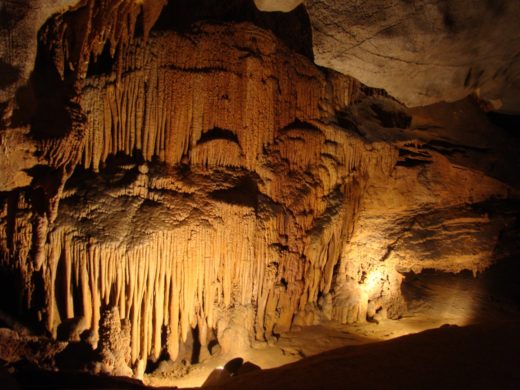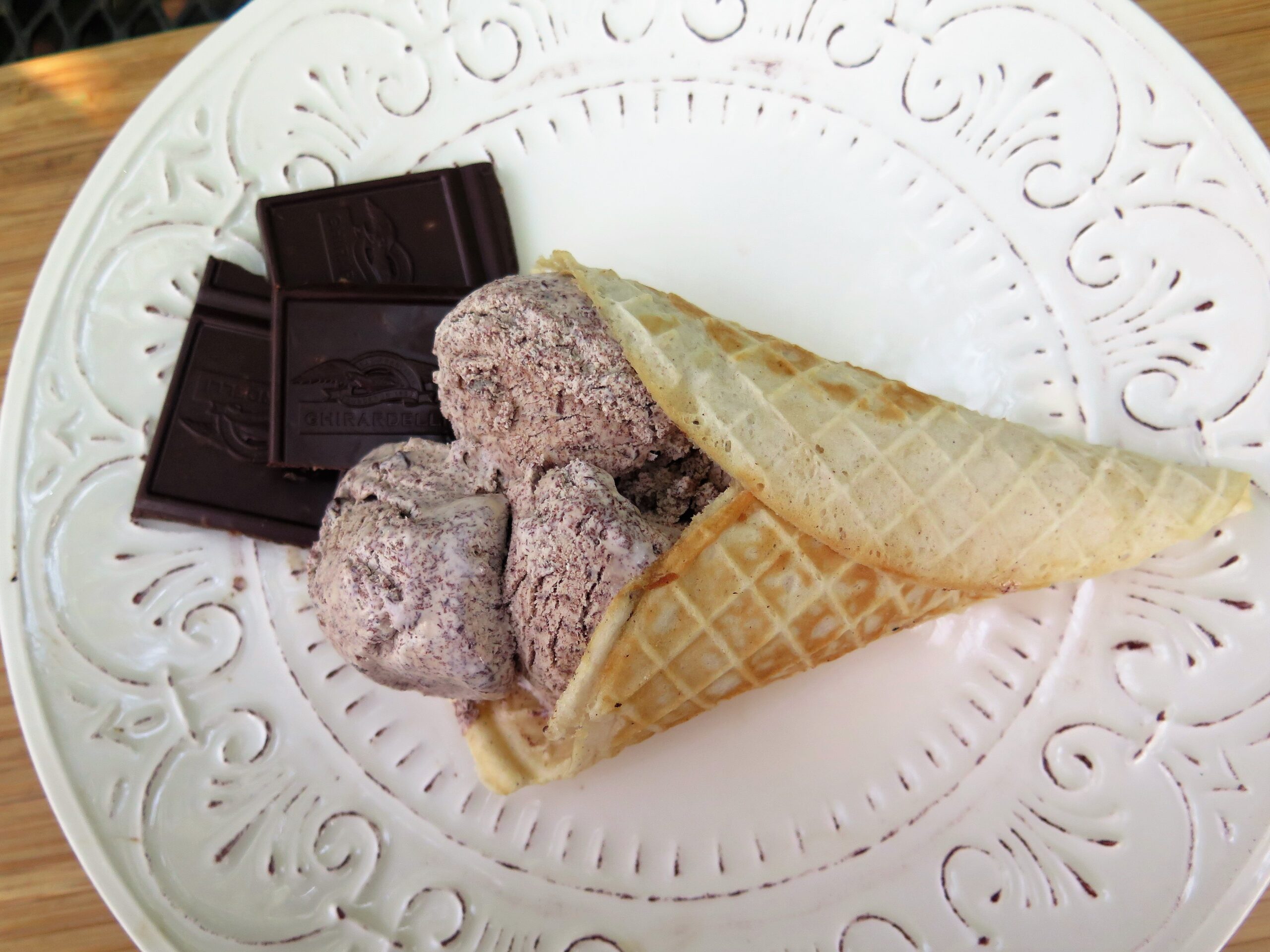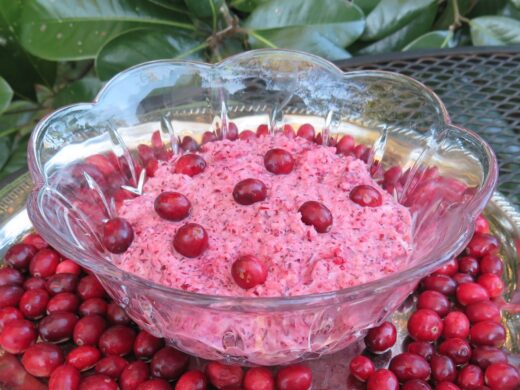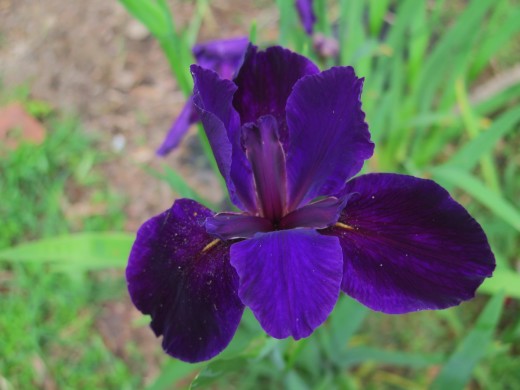Louisiana Tea Plantation
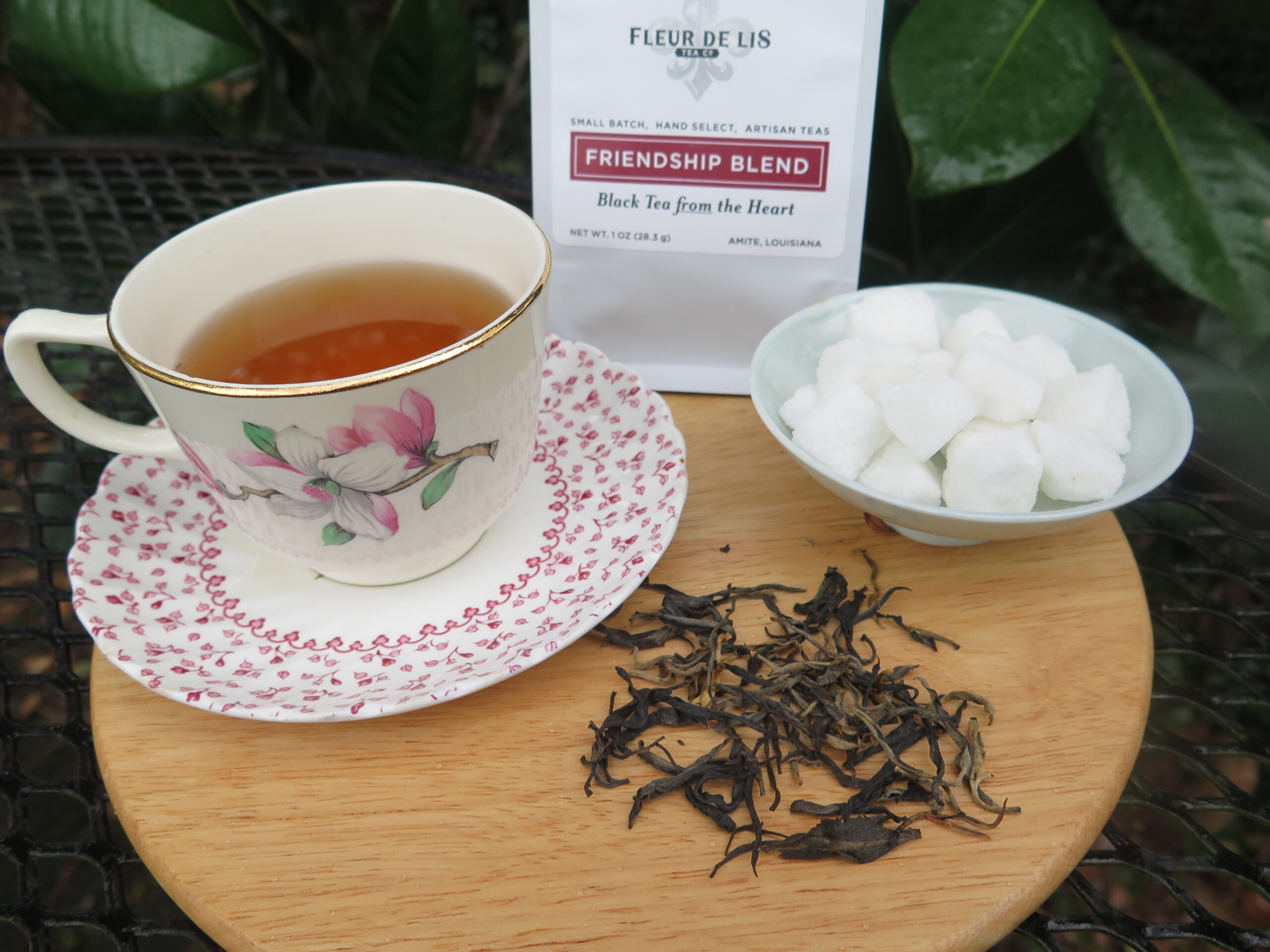
Can you grow tea in Louisiana? Yes, we discovered that it is quite possible to commerically grow and harvest the leaves of tea plants and process them into retail tea products in this state. Recently, we took a tour of the Fleur de Lis tea plantation and learned about growing and processing tea. The plantation is tucked away in a pine tree forest in a very rural part of Louisiana located about 90 minutes from Baton Rouge. The company has been in the retail tea market for only about a year. Already their tea has recieved accolates — it won second price in the United Kingdom Tea Academy ‘s competition as “best black tea” competiting with other tea companies around the globe. The Fleur de Lis tea easily could be the best tea that I have ever tasted — it was smooth, with floral qualities and no astringincy.
The tour bagan on a cold, crisp and sunny Saturday morning. Perfect weather! If you want to learn how to grow and process tea, I recommended the tour given by Hans Marchese, the production manager of Fleur de Lis Tea Company. His passion and love of this process was apparent in the information he shared as the tour went along. It was an interesting morning. I learned that harvesting and processing tea is a very exact and precise process to get the best aromatic tea. Nothing is left to chance. It is a very tedious process. Forget the idea of growing a few tea plants in your backyard, picking and boiling the leaves for tea.
Here are some fun facts to share about growing tea which I gleaned from the tour. In addition to the tour, LSU horticulturist, Yan Chen of the LSU AgCenter is a full-time researcher dedicated to growing tea in Louisiana. Some of this information is corrobabated by one of her recent lectures.
Yes, tea plants do grow in Louisiana. The latitute is about the same as that of India and China. And as a misconception, a high altitude is not needed for growing tea. In fact, tea plants can grow at sea level. They like very acidic soil, with a pH of about 4.0. So, the pine tree forests of Louisiana make a perfect backdrop for growing the tea plants since pine needles are very acidic. These tea plants originally came from the Republic of Georgia in the Black sea region.They were bred to be cold tolerant. And those hybrids were brought to the Black sea region from China in the 1800’s. These camilia Camellia sinensis plants should survive the freezes which we have here in Louisiana.
This plantation grows their tea plants undered “dappled” light; the plants recieve both sunlight and the shade of the pine trees. Hans believes that this contributes to the large concentration of aromatic compounds in the tea leaves.
There are over 3000 variations of tea, each with its own characteristics. However, all teas are all derived from the same evergreen plant, the Camellia sinensis. The different variations of tea are due to how the leaves are processed. This variety of camellia is used for making tea because it is the only one with caffeine. Interestingly, because of the caffeine in the leaves, this Louisiana tea farm doesn’t have a problem with deer nibbling on the fresh tea leaf growth. And herbal teas are an entirely different topic — they aren’t “real tea” at all.
Although tea plants can grow to be 150 years old, the stress put on the plants by constantly picking leaves shortens their productive life to about 35 years. The tea plants are ready begin harvesting after 5 years after they are planted. Tea plants require alot of water — about one inch a week. However, since the roots participate in plant respiration — they don’t like to sit in water — otherwise they will drown. Hence, water drainage is important, especially here in Louisiana.
The season for harvesting tea leaves goes from about March to September and October.. Only the very tip and top two leaves are pinched off each branch of the camellia plant by hand to be processed into the finished tea. And there is a very specific method to “plucking” the leaves so not to damage them. This first harvest is called a “flush.” This is a tedious and hand-intensive process. The best time to harvest the leaves is in the morning before noon when the most aromatic compounds are present. Each plant may undergo several “flushes” during the harvesting season.
Processing the tea leaves is also an exact science. Here is where the different types of tea — white tea, green tea, oolong tea, black tea, and pu-erh tea — are developed. These teas all come from the same plant; the differences are in how the leaves are treated after the tips are picked. Fleur de Lis’ product is black tea.
There are several steps to making black tea:
First, the tea leaves are dried for about 18 to 24 hours to reduce the moisture content in the leaves. This process is called “withering.” The weight of the leaves decreases to about 65%.
Second, the leaves are “rolled.” They are either crushed by machine for about an hour or rolled by hand. In China, this step is done by hand — usually by women uising rollers. This step releases the juices as the leaves are broken up.
Third, the crushed leaves are “fermented” or processed under high humidity (about 90%) at a temperature of about 90 degrees F to oxidate the phenols and other compounds in the tea and develop floral and other flavors.
Fourth, the tea is put in a dryer to reduce the moisture content of the leaves to about 4%. This process also caramelizes the sugars in the tea leaves, adding flavors to the tea, and gives the black color to the tea. The finished tea won’t mold on your shelves.
Then the tea is ready for packaging and/or brewing. And for the best pot of tea, brewing tea correctly is another exact, scientific process. We’ll learn how to do that another time. However, Hans did say that the tea leaves can be used for three tea batches!
The tea plantation tour didn’t discuss the considerable nutitional benefits of drinking tea, but knowledge of the health benefits of tea is important. The many flavonoids in tea help fend against oxidation and free radical production in a person’s body. Green tea is the highest in phenols. Black tea, however, still has considerable benefits — especially if multiple cups are consumed each day. Although tea doesn’t contain many vitamins and minerals, we now know that the phenol component of tea is just as important in preventing risk of chronic degenerative diseases as vitamins, mnerals and trace minerals.
The owner of the Louisiana Fleur de Lis Tea Company is very proficient in woodworking and iron work. Here is a fleur de lis emblem carved into a door panel which was made from a cypress plank estimated to be hundreds of years old. The plank has orange and mohogany shades attesting to its ancient age. In addition to growing tea plants, his company hosts events — such as bridal showers, weddings and civic events. A beautiful location for a special occasion.
We enjoyed our tour of the Louisiana tea plantation and sipping a cup of tea on this cold, crisp morning. The tea is excellent. I hope the company is successful and keeps expanding their business. I know I’ve become a loyal customer!
References:
https://www.wbrz.com/news/lsu-scientist-tests-tea-plants-in-south-louisiana/
https://senchateabar.com/blogs/blog/tea-101
https://www.stashtea.com/blogs/education/tea-types
https://www.britannica.com/topic/tea-beverage/Black-tea
